Dive into the thrilling world of Arthur Conan Doyle with our wide selection of free PDF books.
Discover the genius behind the creator of the legendary detective Sherlock Holmes and immerse yourself in his intriguing cases and exciting adventures.
Known as one of the most influential writers in mystery and detective literature, Arthur Conan Doyle captivates readers with his unique style and ability to weave surprising plots.
His works have left an indelible mark on popular culture and continue to be a source of inspiration for contemporary writers.
We invite you to explore our collection, where you will find Arthur Conan Doyle’s most iconic books, from the unforgettable stories of Sherlock Holmes to other characters and genres he explored throughout his literary career.
Don’t wait any longer to begin your journey through the pages of Arthur Conan Doyle. Download your PDF books now and delve into the intrigues and mysteries that have captivated millions of readers worldwide.
1) The Adventures of Sherlock Holmes

The Adventures of Sherlock Holmes is an exciting collection of detective cases featuring the brilliant detective Sherlock Holmes and his faithful companion, Dr. Watson. Immerse yourself in a world of intrigue, mystery, and deductive brilliance that will keep you captivated from beginning to end.
Through its stories, The Adventures of Sherlock Holmes explore the cunning of the human mind, puzzle-solving, and the struggle between good and evil. Themes of justice, deceit, and the power of observation are intertwined on every page, providing a fascinating literary experience.
The Adventures of Sherlock Holmes will transport you to a universe of suspense and excitement that will keep you hooked until the very last resolution.
2) A Study In Scarlet
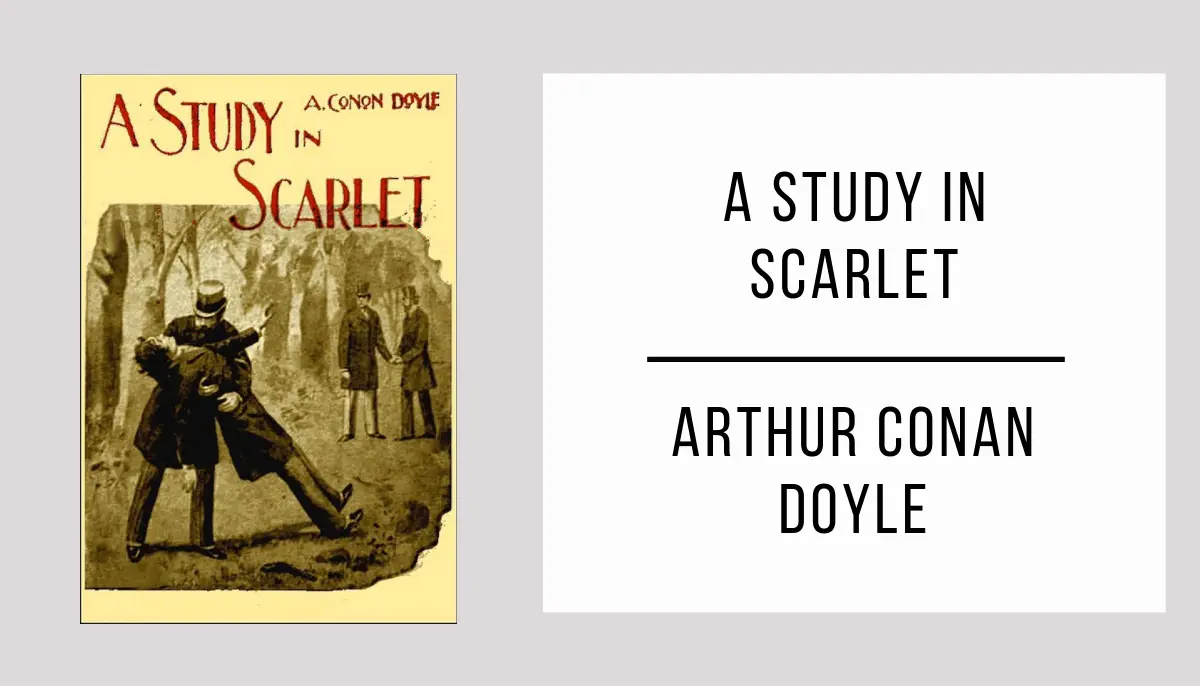
A Study in Scarlet is a fascinating masterpiece of mystery written by Arthur Conan Doyle. Immerse yourself in an intriguing murder that will challenge the cunning of the legendary detective Sherlock Holmes.
This book addresses themes such as revenge, morality, and religion, explored through the lens of Sherlock Holmes’s brilliant mind. Discover how deduction and wit intertwine in this captivating story.
Don’t resist the call of A Study in Scarlet and delve into a world of puzzles and suspense. Let yourself be captivated by the genius of Sherlock Holmes and accompany Dr. Watson on an adventure that will keep you on the edge of your seat until the last page.
3) The Hound of the Baskervilles
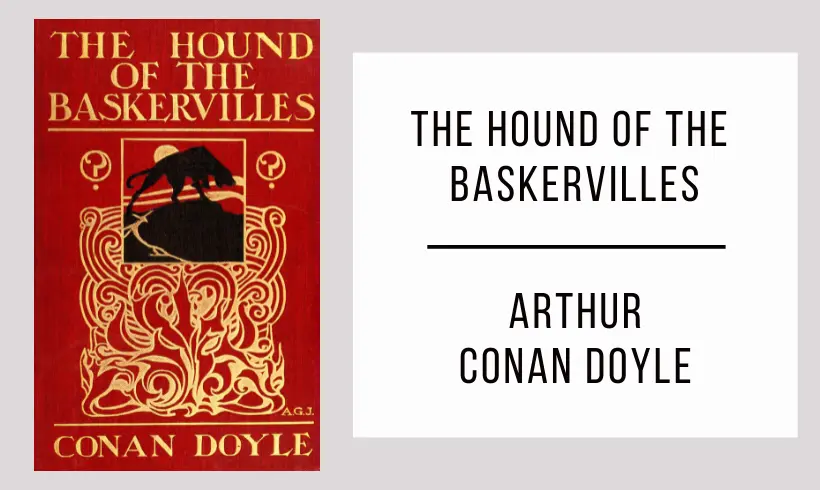
The Hound of the Baskervilles is Arthur Conan Doyle’s most famous novel, starring the iconic detective Sherlock Holmes. The plot revolves around the “curse” of the Baskervilles, initiated with the death of Hugo Baskerville by a hound, all this to punish him for his wickedness.
In the year 1800, Sir Charles Baskerville is found dead on the Devonshire moor, so Dr. Mortimer goes in search of Sherlock and shows him the manuscript about the curse, and tells him about some hound tracks found near the body. From then on, the investigation of this mysterious crime begins.
4) The Sign of Four

The Sign of Four is an exciting mystery and detective novel that immerses you in the brilliant deductions of Sherlock Holmes as he unravels an enigma full of intrigue and danger.
Through its plot full of surprising twists and captivating characters, The Sign of the Four explores themes such as greed, betrayal, and puzzle-solving, keeping the reader on edge until the last page.
Don’t miss the opportunity to immerse yourself in the genius of Arthur Conan Doyle and enjoy an unforgettable literary adventure. The Sign of Four will transport you to a world of suspense and mystery that will keep you hooked from beginning to end.
5) The Valley of Fear

The Valley of Fear is a captivating mystery novel written by Arthur Conan Doyle, where the brilliant detective Sherlock Holmes faces an intriguing murder that hides dark secrets.
In this work, Conan Doyle explores themes of crime, revenge, and the eternal struggle between good and evil. Through Holmes’s analytical mind and cunning, the complexities of a case that challenges conventions are unveiled.
Immerse yourself in the pages of The Valley of Fear and let yourself be enveloped by a plot full of suspense and unexpected twists. Discover why Sherlock Holmes has become an icon of detective literature and enjoy a reading that will keep you captivated until the last page.
6) The Lost World

The Lost World is an exciting work by Arthur Conan Doyle that plunges you into a perilous expedition to a forgotten land, inhabited by prehistoric creatures and full of unfathomable mysteries.
Through its plot filled with adventure and scientific discoveries, The Lost World addresses themes such as the struggle for survival, the confrontation between the ancient and the modern, and the fascination with the unknown.
Don’t resist the call of the jungle and venture into The Lost World. This captivating novel will transport you to a lost world full of excitement, suspense, and amazing secrets waiting to be discovered.
7) The Memoirs of Sherlock Holmes

The Memoirs of Sherlock Holmes is an exciting collection of detective tales that immerse the reader in the mysteries and genius of the legendary consulting detective.
Through its intriguing stories, The Memoirs of Sherlock Holmes explore themes of logic, deduction, crime, and friendship, captivating the reader’s mind with each mystery solved.
Dive into the pages of “The Memoirs of Sherlock Holmes” and be captivated by the cunning and wit of Sherlock Holmes as he unravels the most challenging enigmas. A must-read for mystery and crime-solving enthusiasts.
8) The Return of Sherlock Holmes

The Return of Sherlock Holmes is an exciting compilation of intriguing cases solved by the brilliant detective and his faithful companion, Dr. Watson.
This book stands out for its wit and deductive ability, exploring themes such as the power of observation, logic, and mystery-solving, immersing the reader in a fascinating world of suspense and surprises.
Immerse yourself in Sherlock Holmes’s brilliant deductions and be captivated by the thrilling adventures that await you in The Return of Sherlock Holmes. A classic of detective literature that you cannot miss.
9) His Last Bow

His Last Bow is an intriguing tale by Arthur Conan Doyle that immerses the reader in an exciting confrontation between Sherlock Holmes and a cunning German spy during the First World War.
This literary classic addresses themes of espionage, loyalty, and patriotism as the brilliant detective uses his sharp mind and deductive skills to unravel a dangerous plot that threatens the United Kingdom.
Don’t miss the opportunity to delve into the brilliant mind of Sherlock Holmes and enjoy this thrilling adventure full of intrigue and suspense.
10) The Adventure of the Speckled Band

The Adventure of the Speckled Band is a fascinating detective story written by Arthur Conan Doyle. Immerse yourself in a world of mystery and suspense as Sherlock Holmes unravels an intriguing and dangerous case.
This literary classic stands out for its narrative brilliance and its ability to keep the reader on edge. The Adventure of the Speckled Band explores themes of intrigue, justice, and the struggle between good and evil through Holmes’s analytical mind.
Don’t miss the opportunity to delve into one of the finest works of detective literature. The Adventure of the Speckled Band will captivate you with its compelling plot and unforgettable characters.
11) The Final Problem

The Final Problem is the epic showdown between the brilliant detective Sherlock Holmes and his archenemy, Professor Moriarty, in a battle that culminates at the perilous Reichenbach Falls.
This literary classic addresses themes such as cunning, ingenuity, and the struggle between good and evil. Through Sherlock Holmes’ brilliant mind and Moriarty’s Machiavellian villainy, Arthur Conan Doyle immerses us in an exciting game of intelligence and suspense.
Immerse yourself in the pages of The Final Problem and let yourself be captivated by the wit and intrigue of Sherlock Holmes. This book will keep you on the edge of your seat as you follow the footsteps of history’s most famous detective in his final confrontation.
12) A Scandal in Bohemia

A Scandal in Bohemia is an intriguing masterpiece that immerses readers in a world of mystery and cunning. Join the iconic detective Sherlock Holmes on an exciting adventure to solve a scandal in the enigmatic Bohemian society.
This book addresses themes of deception, the power of observation, and the struggle between reason and emotion. With unexpected twists and moral dilemmas, “A Scandal in Bohemia” captures the essence of the classic detective literature genre.
Discover the intricate puzzles and deductive brilliance of Sherlock Holmes in A Scandal in Bohemia. Immerse yourself in this captivating tale full of suspense and challenge your wits as you delve into one of Arthur Conan Doyle’s most captivating stories.
13) The Adventure of the Blue Carbuncle

The Adventure of the Blue Carbuncle is an exciting mystery written by Arthur Conan Doyle that follows the legendary detective Sherlock Holmes as he unravels the enigma of a valuable stolen jewel.
In The Adventure of the Blue Carbuncle, Conan Doyle explores themes of cunning, false appearances, and the importance of details in solving a case, immersing the reader in a fascinating world of deduction and suspense.
Don’t resist the temptation to discover Sherlock Holmes’s ingenuity in The Adventure of the Blue Carbuncle. Get ready for an thrilling adventure full of intrigue and enjoy a read that will captivate your imagination until the very last page.
14) The Adventure of Silver Blaze

The Adventure of Silver Blaze is an intriguing Sherlock Holmes tale where the famous detective delves into the world of horse racing to solve a mystery involving the disappearance of a valuable steed and a murder.
Thematically, The Adventure of Silver Blaze addresses the cunning and characteristic deduction of Sherlock Holmes, exploring intrigue, suspense, and hidden secrets in the context of horse competitions.
Don’t resist the opportunity to delve into Sherlock Holmes’s brilliant investigations in The Adventure of Silver Blaze. Immerse yourself in a world of mystery and excitement, where each page will take you closer to unraveling the enigma.
15) The White Company

The White Company is an exciting medieval tale filled with bravery, love, and epic battles.
In The White Company, Arthur Conan Doyle explores themes of honor, loyalty, and bravery amidst the Hundred Years’ War.
Immerse yourself in the thrilling adventure of The White Company and be captivated by the unforgettable characters and the masterful narrative of Arthur Conan Doyle.
16) The Five Orange Pips

The Five Orange Pips is an intriguing tale by Arthur Conan Doyle that immerses the reader in an enigma full of suspense and excitement.
Through the brilliant mind of Sherlock Holmes, the book explores themes of revenge, mystery, and crime resolution, keeping the reader constantly intrigued.
Don’t miss the opportunity to immerse yourself in the fascinating world of The Five Orange Pips, where Sherlock Holmes’s cunning will guide you on an exciting quest for the truth.
17) The Man with the Twisted Lip

The Man with the Twisted Lip is an intriguing mystery tale in which Sherlock Holmes confronts an enigma shrouded in hidden secrets and unexpected twists.
Through its pages, The Man with the Twisted Lip explores themes such as the duality of identity, the cunning of deception, and the quest for truth in an enigmatic world.
Immerse yourself in the brilliance of literature’s most famous detective and discover the fascinating world of “The Man with the Twisted Lip”. A read that will keep you on the edge and challenge your wits until the very last page.
18) The Adventure of the Empty House

The Adventure of the Empty House is a captivating tale of intrigue and mystery in which Sherlock Holmes returns from the dead to solve an enigma that defies logic and will surprise the reader on every page.
Exploring themes such as deductive wit, crime resolution, and triumphant return, The Adventure of the Empty House immerses the reader in a fascinating world of puzzles to be solved and unforgettable characters.
You can’t miss this masterpiece by Arthur Conan Doyle that will keep you on the edge of your seat. With surprising twists and engaging narrative, The Adventure of the Empty House will transport you to an era full of mystery and excitement.
19) The Boscombe Valley Mystery

The Boscombe Valley Mystery is an exciting tale of intrigue and suspense that follows the brilliant detective Sherlock Holmes as he unravels a dark mystery in the picturesque Boscombe Valley.
This book addresses themes such as justice, the truth hidden behind appearances, and the importance of following key clues. Through Holmes’s cunning and deductive reasoning, a plot of blackmail and revenge is revealed, keeping readers intrigued from start to finish.
Immerse yourself in The Boscombe Valley Mystery and be captivated by Sherlock Holmes’s brilliant mind. Discover the thrill of solving a puzzle alongside the famous detective and enjoy a reading filled with surprising twists that will keep you glued to the pages.
20) The Adventure of the Copper Beeches

The Adventure of the Copper Beeches is a captivating suspenseful tale where Sherlock Holmes unravels dark secrets at the Copper Beeches estate.
This book addresses themes such as the power of observation, mystery-solving, and the struggle for justice, all wrapped in an intriguing and exciting plot.
Immerse yourself in the pages of The Adventure of the Copper Beeches and let yourself be captivated by the genius of Arthur Conan Doyle. Discover a world of intrigue and suspense that will keep you hooked until the very last page.
21) The Adventure of the Musgrave Ritual
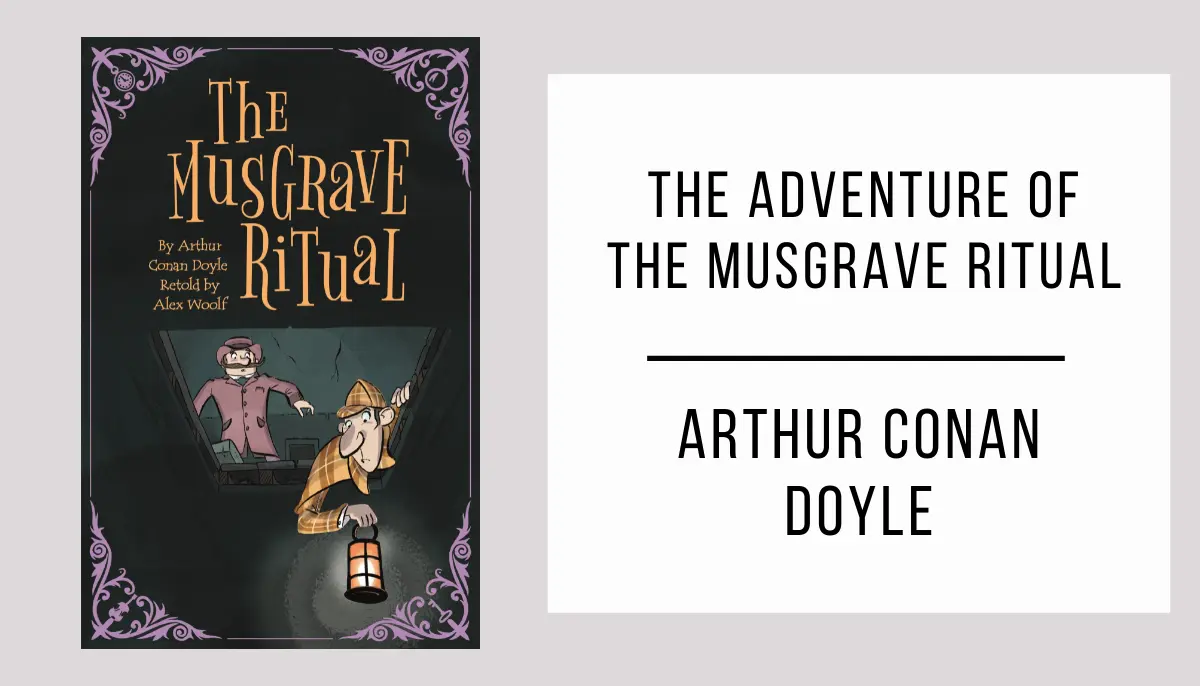
The Adventure of the Musgrave Ritual is an intriguing tale of mystery and hidden secrets. When the butler disappears and valuable documents are stolen, the famous detective Sherlock Holmes delves into a case that will reveal dark rituals and surprising revelations.
This classic by Arthur Conan Doyle explores themes such as obsession, loyalty, and the consequences of secrets from the past. Through Sherlock Holmes’s cunning and ingenuity, the reader is immersed in an enigma that defies logic and unveils the intricacies of the human mind.
Immerse yourself in the pages of The Adventure of the Musgrave Ritual and be captivated by the genius of Sherlock Holmes as he unravels a mystery full of unexpected twists.
22) The Adventure of the Devil's Foot

The Adventure of the Devil’s Foot is an exciting tale of intrigue and mystery written by Arthur Conan Doyle. Immerse yourself in an enigma that will challenge the cunning of the legendary detective Sherlock Holmes and his faithful companion, Dr. Watson.
This classic of detective literature addresses themes such as crime, madness, and puzzle-solving. Through Holmes’s brilliant mind, the reader is plunged into a world of logical deductions and surprising twists.
Don’t miss the opportunity to enjoy Arthur Conan Doyle’s genius in The Adventure of the Devil’s Foot. Let yourself be captivated by the tension and suspense of this captivating story that will keep you intrigued until the last page.
23) The Adventure of the Bruce-Partington Plans

The Adventure of the Bruce-Partington Plans is an intriguing mystery written by Arthur Conan Doyle involving a murder and the theft of secret military plans.
In this captivating story, Conan Doyle explores themes of espionage, betrayal, and loyalty, as the brilliant detective Sherlock Holmes unravels a suspenseful and secretive case.
Immerse yourself in the world of Sherlock Holmes and accompany him on his brilliant investigation in The Adventure of the Bruce-Partington Plans. This classic work will keep you on the edge of your seat and captivate you from the very first page.
24) The Adventure of the Dying Detective

The Adventure of the Dying Detective is a fascinating tale where Sherlock Holmes confronts a deadly illness while solving an enigma from the comfort of his home on Baker Street.
This book stands out for its ingenious detective plot and for exploring themes of deception, manipulation, and the power of the mind over the body.
Immerse yourself in Sherlock Holmes’ brilliant deductions and be captivated by the genius of Arthur Conan Doyle in The Adventure of the Dying Detective.
25) The Adventure of the Crooked Man

The Adventure of the Crooked Man is a fascinating tale of mystery and suspense written by Arthur Conan Doyle. Immerse yourself in this captivating story where Sherlock Holmes and Dr. Watson face an intriguing enigma that will push them to the limits of their cunning.
This literary classic stands out for its deep analysis of themes of guilt, love, and rivalry. Through the brilliant mind of Sherlock Holmes, the complexities of human relationships are explored, and the darkest secrets are unmasked.
Don’t miss the opportunity to delve into the world of Arthur Conan Doyle’s genius and immerse yourself in an adventure full of suspense and excitement. The Adventure of the Crooked Man will keep you on the edge of your seat until the very last page, leaving you craving for more.
26) The Adventure of the Six Napoleons

The Adventure of the Six Napoleons is an exciting detective story in which Sherlock Holmes faces a mystery wrapped in the destruction of valuable busts of Napoleon.
This book explores themes of obsession, hidden secrets, and Holmes’s deductive genius, providing a reading experience full of intrigue and suspense.
Immerse yourself in The Adventure of the Six Napoleons and let yourself be captivated by Sherlock Holmes’s brilliant mind as he solves a fascinating enigma.
27) The Adventure of the Beryl Coronet

The Adventure of the Beryl Coronet is an intriguing tale of the genius detective Sherlock Holmes, written by Arthur Conan Doyle. Immerse yourself in an enigma that will challenge your mind and keep your eyes glued to every page.
This literary classic addresses themes of cunning, mystery, and puzzle-solving. Through the brilliance of Sherlock Holmes, you will discover the excitement of unraveling an intriguing theft and delving into the minds of the most iconic characters in detective literature.
Are you ready to plunge into a world of suspense and deduction? The Adventure of the Beryl Coronet will take you on an exciting adventure and keep you on the edge of your seat until the very end.
28) Micah Clarke

Micah Clarke is a captivating historical adventure that transports the reader to the Monmouth Rebellion in the 17th century, following the journey of a young man in search of adventure and his transformation in a time filled with intrigue and danger.
In Micah Clarke, Arthur Conan Doyle explores themes such as personal growth, religion, and the importance of tolerance, while immersing us in a world of political conflicts and epic battles.
Don’t miss this fascinating work that combines history, action, and profound reflections. Micah Clarke will take you on an unforgettable journey full of emotions and invite you to reflect on human nature.
29) The Captain of the Pole-Star

The Captain of the Pole-Star is an intriguing tale of mystery and the supernatural set in the icy waters of the Arctic, keeping the reader on the edge of their seat until the last page.
This captivating book immerses us in a story full of thematic elements such as polar exploration, suspense, and the presence of the supernatural, creating an irresistible combination.
Don’t miss the opportunity to delve into the pages of The Captain of the Pole-Star, a literary masterpiece that will transport you to a world of mystery and intense emotions.
30) The Great Keinplatz Experiment

The Great Keinplatz Experiment is an intriguing work by Arthur Conan Doyle that merges science and spirituality in a unique and mysterious experiment.
Through mesmerism and the exploration of the limits of the mind, the book addresses themes such as identity, the perception of reality, and the hidden secrets of the soul.
Immerse yourself in the pages of The Great Keinplatz Experiment and let yourself be captivated by the fascinating combination of intrigue, humor, and reflection that will transport you to a world of mysteries and discoveries.
31) The Parasite

The Parasite is an intriguing short story written by Arthur Conan Doyle that immerses you in a world where reason confronts supernatural powers, unleashing an exciting and mysterious conflict.
Through its plot, The Parasite explores themes such as the duality between the rational and the supernatural, delving into spiritualist beliefs and energetic vampirism, captivating the reader with its enigmatic atmosphere.
Discover in The Parasite a fascinating story that will keep you on the edge, challenging your convictions and immersing you in a world where the unknown intertwines with the human mind.
32) The Case of Lady Sannox
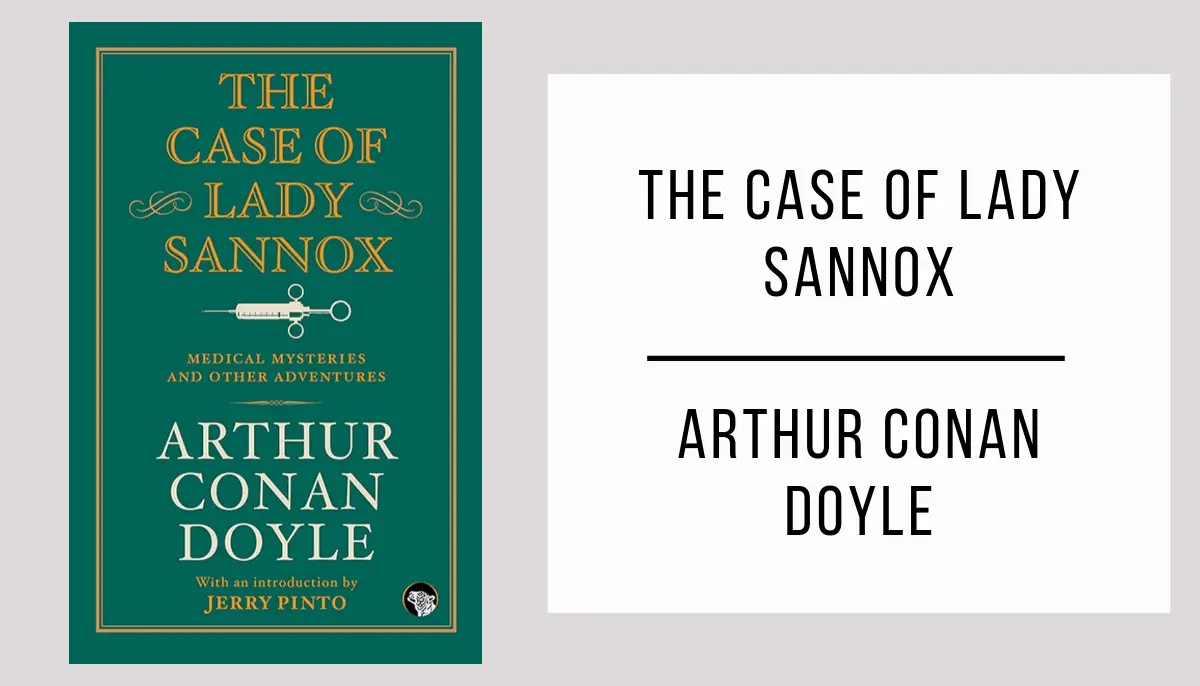
The Case of Lady Sannox is an intriguing tale by Arthur Conan Doyle that unveils the dark secrets behind a mysterious woman and the murky connection she shares with a renowned surgeon.
Through its pages, The Case of Lady Sannox explores profound themes of guilt, deception, and the inevitable consequences of our past actions. Immerse yourself in this story filled with moral dilemmas and redemption.
Dive into The Case of Lady Sannox and be captivated by the literary mastery of Arthur Conan Doyle as you enter a world of mystery and twisted morality.
33) The Case-Book of Sherlock Holmes

The Case-Book of Sherlock Holmes is a captivating collection of cases solved by the genius detective Sherlock Holmes and narrated by his faithful companion, Dr. Watson. Immerse yourself in a world of mystery and deduction as you accompany Holmes on his brilliant investigations.
This book addresses themes such as cunning, deductive logic, and puzzle-solving, highlighting Sherlock Holmes’ brilliance as a detective. Through his cases, intrigues, seemingly impossible crimes, and the eternal struggle between good and evil are explored.
Don’t miss the chance to dive into the fascinating stories of The Case-Book of Sherlock Holmes. Discover why this book has captivated readers of all ages and let yourself be carried away by Holmes’ genius as he unravels each mystery.
34) The Exploits of Brigadier Gerard

The Exploits of Brigadier Gerard is an exciting collection of stories that immerses us in the heroic adventures of a brave French officer during the Napoleonic Wars. Get ready to experience intense emotions and discover a world full of bravery and action.
Exploring themes of honor, courage, and military cunning, The Exploits of Brigadier Gerard showcases bravery amidst the chaos of war. Through the masterful narrative of Arthur Conan Doyle, the challenges and triumphs of an unforgettable character are revealed.
Don’t miss the opportunity to dive into the pages of The Exploits of Brigadier Gerard. An engaging read that will transport you to a past filled with intrigue, epic battles, and a protagonist who defies limits.
35) The Last Galley

The Last Galley is a captivating tale by Arthur Conan Doyle that immerses us in a Carthaginian galley devastated by battle, exploring the bravery and decay of an ancient civilization.
Through its pages, The Last Galley addresses themes of personal overcoming, honor, and the struggle against adversity, transporting us to a world of rivalries and tensions in ancient Rome.
Don’t miss this thrilling work by Arthur Conan Doyle that will captivate you with its enveloping narrative and take you on a journey full of intrigue and excitement.
36) The Land of Mist

The Land of Mist is a fascinating novel that combines mystery, spiritualism, and science fiction, transporting you to a world full of enigmas to uncover.
Exploring themes of life after death, The Land of Mist invites reflection on the existence of the supernatural and the search for answers beyond the tangible.
Dive into the pages of The Land of Mist and let yourself be enveloped by Arthur Conan Doyle’s masterful narrative. A captivating read that will keep you intrigued until the last page.
37) Sir Nigel

Sir Nigel is a thrilling historical novel that will transport you to the Hundred Years’ War, following the footsteps of the brave knight Nigel Loring in his quest for honor and adventure.
In Sir Nigel, Arthur Conan Doyle explores themes of loyalty, courage, and love amid a medieval setting and wartime conflicts, providing a captivating narrative that blends history and fiction.
You cannot miss the opportunity to immerse yourself in the epic battles and intrigues of “Sir Nigel.” This masterpiece of classic literature will keep you captivated from start to finish, transporting you to an era filled with bravery and intense emotions.
38) The Mystery of Cloomber
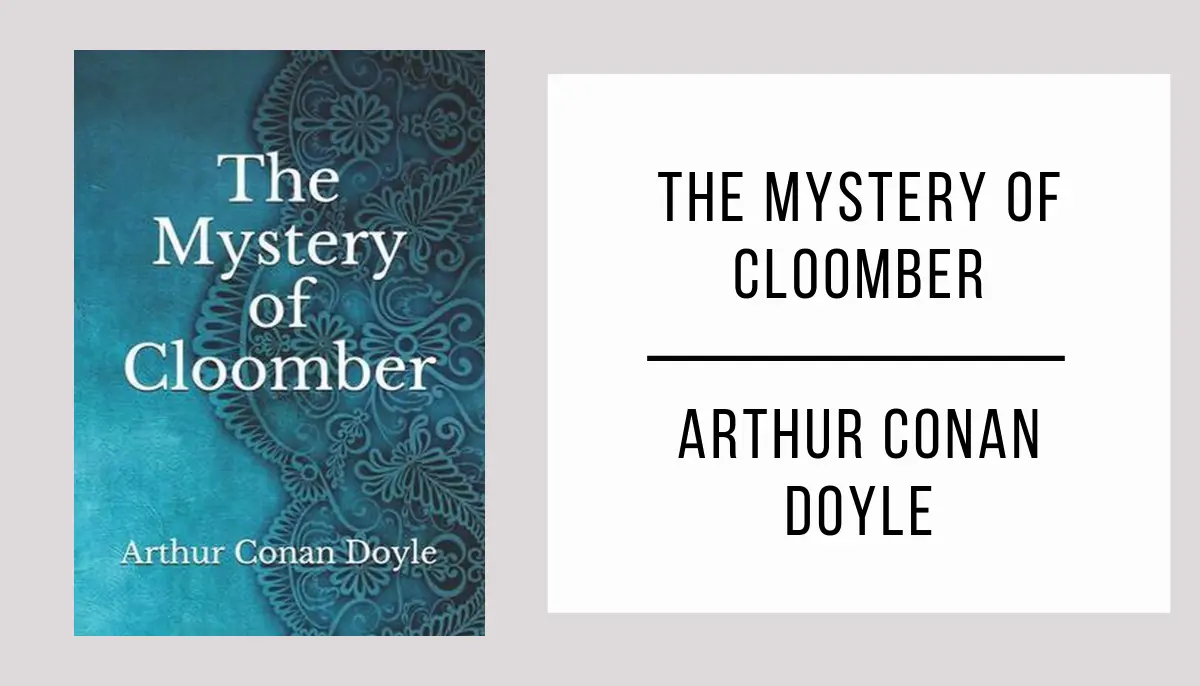
The Mystery of Cloomber is a fascinating novel filled with intrigue and suspense that transports the reader to a world of mystery at Cloomber Hall.
This work by Arthur Conan Doyle explores themes such as dark pasts, paranoia, and supernatural forces, immersing the reader in an enigmatic and captivating atmosphere.
Discover the hidden secrets within the pages of The Mystery of Cloomber and let yourself be enveloped by the suspense and excitement that only a master of literature like Conan Doyle can offer.
39) Rodney Stone

Rodney Stone is an exciting novel that blends gothic mystery and the thrilling world of boxing.
Through the intertwined stories of Rodney Stone and his friend Boy Jim, the novel explores themes of identity, personal growth, and the struggle to find one’s place in society.
Immerse yourself in the pages of Rodney Stone and let yourself be carried away by a narrative full of intrigue, action, and unforgettable characters.
40) Adventures of Gerard

Adventures of Gerard is an exciting collection of tales that transports readers to the epic exploits of the brave Napoleonic soldier, Brigadier Gerard.
Exploring themes of heroism, courage, and loyalty, Adventures of Gerard offers a captivating glimpse into military life and soldiers’ experiences during the Napoleonic Wars.
Immerse yourself in Gerard’s thrilling adventures and discover a world full of action, intrigue, and unforgettable characters.
41) The Crime of the Congo

The Crime of the Congo is a striking work by Arthur Conan Doyle that reveals the horrors and abuses committed in the Congo Free State during the 19th century.
It explores deep themes such as human rights, colonial exploitation, and the struggle for justice amidst devastating commerce.
Dive into the pages of The Crime of the Congo and discover a courageous indictment that will lead you to reflect on the human condition and the fight for freedom.
42) The War in South Africa: Its Cause and Conduct

The War in South Africa: Its Cause and Conduct is a captivating essay that unveils the causes and development of the war in South Africa with a unique and enlightening perspective.
Exploring themes of diplomacy, conflict, and humanity, the book meticulously examines the context and actions of those involved, presenting a balanced and objective view.
Dive into the pages of The War in South Africa: Its Cause and Conduct and discover a fascinating historical narrative that will challenge your preconceptions and prompt reflection on the conflicts and decisions that shape our world.
43) The Case for Spirit Photography

The Case for Spirit Photography is a fascinating book that defends the validity of spirit photography against accusations of fraud, presenting compelling evidence and impactful testimonies.
Exploring themes of the paranormal and the authenticity of supernatural experiences, The Case for Spirit Photography challenges conventional beliefs and invites us to consider the possibility of a connection between the visible and invisible worlds.
Immerse yourself in the pages of The Case for Spirit Photography and discover a captivating investigation that pushes the boundaries of reality, sparks imagination, and questions our understanding of the inexplicable.
44) The Mystery of Sasassa Valley

The Mystery of the Sasassa Valley is an exciting story by Arthur Conan Doyle that immerses you in an intriguing journey through South Africa in search of a hidden treasure.
Through its pages, The Mystery of the Sasassa Valley explores themes of adventure, superstition, and the pursuit of fortune, keeping the reader on the edge with every page.
Don’t miss the opportunity to dive into this fascinating work by Conan Doyle and discover the secrets that await in the mysterious Sasassa Valley.
45) The British Campaign in France and Flanders

The British Campaign in France and Flanders is a gripping and detailed account of British involvement in World War I. From military tactics to moments of bravery, this book presents an immersive view of the war on the Western Front.
Through his narrative, Arthur Conan Doyle explores themes of leadership, sacrifice, and resilience amid the conflict. This historical account reveals the importance of cooperation among allies and the determination of British soldiers during the war.
Dive into The British Campaign in France and Flanders and uncover the real and moving history of those who fought in World War I.
46) The Adventure of the Cardboard Box

The Adventure of the Cardboard Box is an intriguing tale of mystery and deception crafted by Arthur Conan Doyle. Immerse yourself in the mind of the legendary detective Sherlock Holmes as he uncovers a hidden plot within an apparently innocent cardboard box.
This literature classic stands out for its themes of cunning and puzzle-solving. Join Holmes and his faithful companion Watson on an exhilarating adventure filled with clues, suspects, and unexpected twists. Suspense will weave around you as you unravel the deception alongside the characters.
Get ready to delve into the fascinating world of Sherlock Holmes with The Adventure of the Cardboard Box. With its captivating prose and skillful ability to keep the reader on edge, Arthur Conan Doyle will transport you to a Victorian era full of intrigue.
47) The Poison Belt

The Poison Belt is an exciting science fiction novel where the world faces a deadly threat and a group of brave individuals fights for survival.
Through its apocalyptic plot, The Poison Belt explores themes such as survival, human responsibility, and the valuation of life amid catastrophe.
Dive into the pages of The Poison Belt and be captivated by the tension, mystery, and moral dilemmas that will keep you hooked from start to finish.
48) A Visit to Three Fronts

A Visit to Three Fronts is an intriguing mystery in which the brilliant detective Sherlock Holmes faces an academic enigma at the University of Cambridge.
Exploring themes of justice, loyalty, and academic corruption, the book immerses the reader in a world where solving a case becomes a test of wit and cunning.
Dive into the mind of the legendary Sherlock Holmes as he unravels the threads of a complex academic mystery. With its captivating writing style and fascinating characters, A Visit to Three Fronts is a must-read for mystery lovers and those seeking to immerse themselves in Conan Doyle’s genius.
49) The Vital Message

The Vital Message is an intriguing essay that explores spirituality and challenges conventional beliefs about religion and life after death.
Through its pages, Arthur Conan Doyle immerses us in a deep analysis of faith, communication with the spiritual world, and the quest for transcendental meaning in our lives.
Don’t miss the opportunity to discover the shocking revelations offered by The Vital Message, a captivating work that invites you to question and reflect on the deepest mysteries of human existence.
50) The New Revelation

The New Revelation is a book by Arthur Conan Doyle that explores the existence of a spiritual world and communication with spirits.
Through essays and personal reflections, Doyle addresses profound topics such as life after death, the existence of God, and the philosophical implications of spirituality.
Dive into the depths of Arthur Conan Doyle’s mind and discover his fascinating view on life after death. The New Revelation awakens curiosity and challenges your beliefs, offering a unique perspective that invites you to reflect on the mysteries of the universe.
51) The Red-Headed League
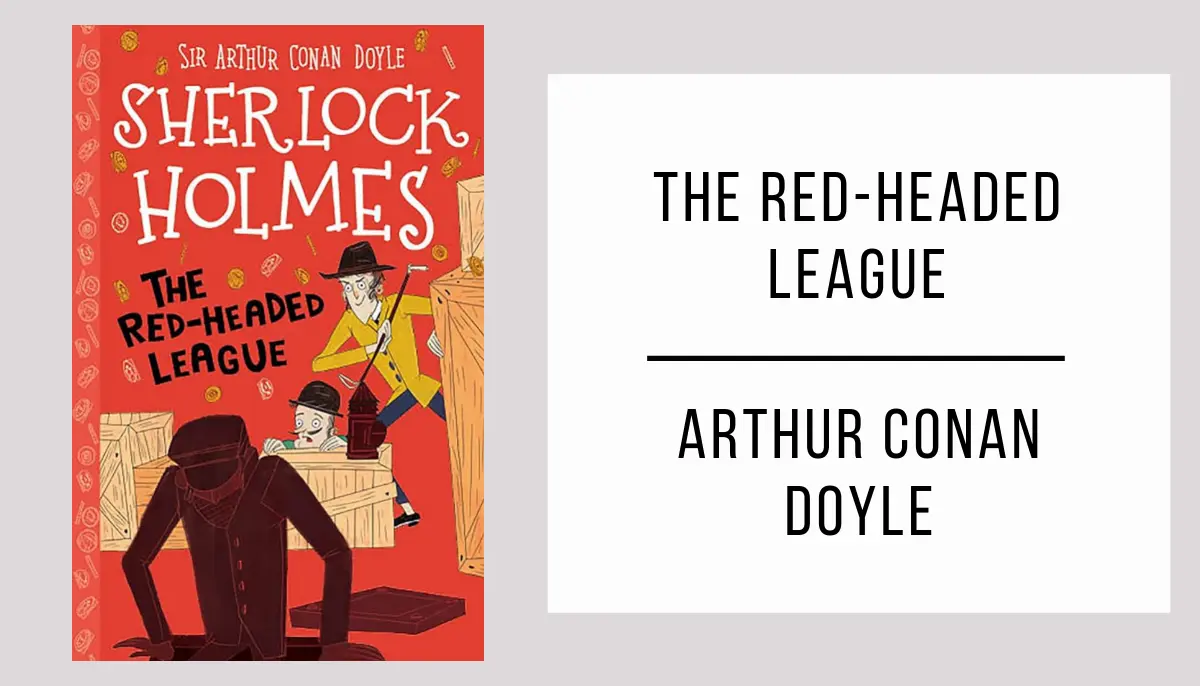
The Red-Headed League is an exciting mystery tale written by Arthur Conan Doyle. Dive into the intrigue and hidden secrets as you join Sherlock Holmes in his cunning investigation.
This literary classic addresses themes such as deceit, manipulation, and the importance of seemingly insignificant details. Discover how Holmes’ deductive skills unravel the most complex enigmas.
Ready for a journey full of suspense and surprises? Don’t miss The Red-Headed League, a captivating read that will keep you on the edge of your seat. Let Holmes’ cunning envelop you and immerse yourself in this thrilling world of intrigue and mystery.
52) The History of Spiritualism
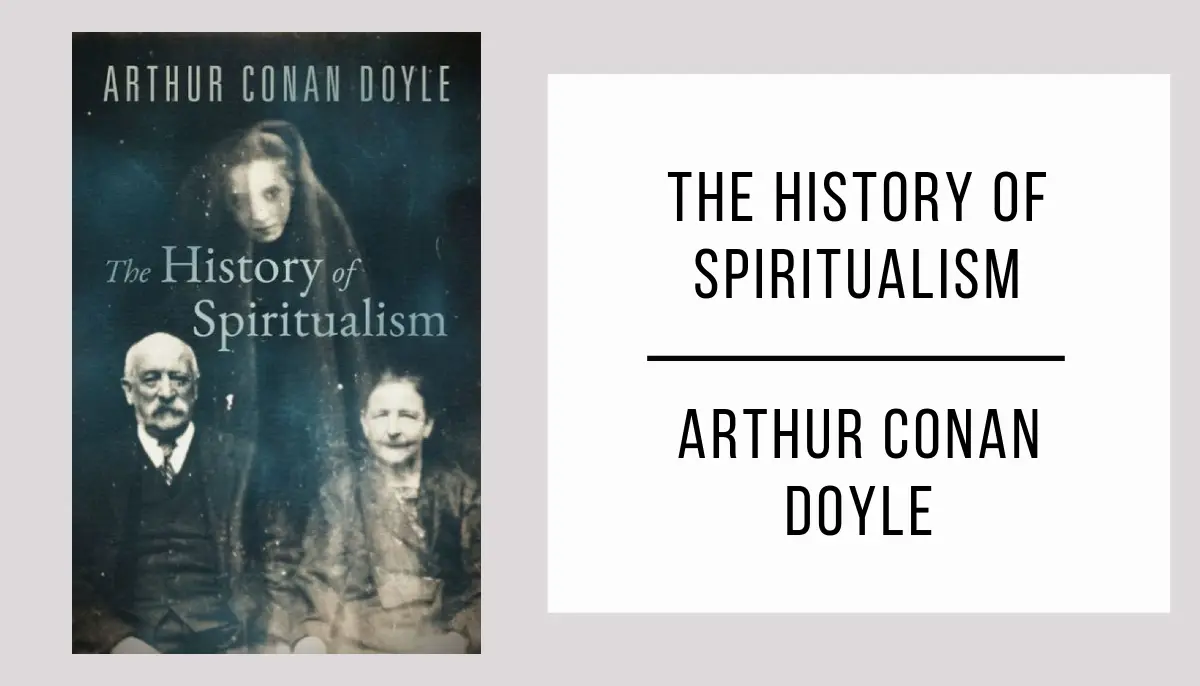
The History of Spiritualism is a fascinating journey through the mysteries of the spiritual world, written by the acclaimed author Arthur Conan Doyle. Discover the psychic phenomena and supernatural experiences that will challenge your beliefs.
This book examines the emergence and evolution of Spiritualism, exploring topics such as communication with spirits, paranormal phenomena, and related scientific investigations. Immerse yourself in a detailed and objective study of this fascinating phenomenon.
Don’t miss the opportunity to delve into The History of Spiritualism, a literary masterpiece that will expand your view of the world. Allow yourself to explore the limits of the unknown and experience a reading that will challenge your beliefs in the power of the spirit.
53) The Tragedy of the Korosko
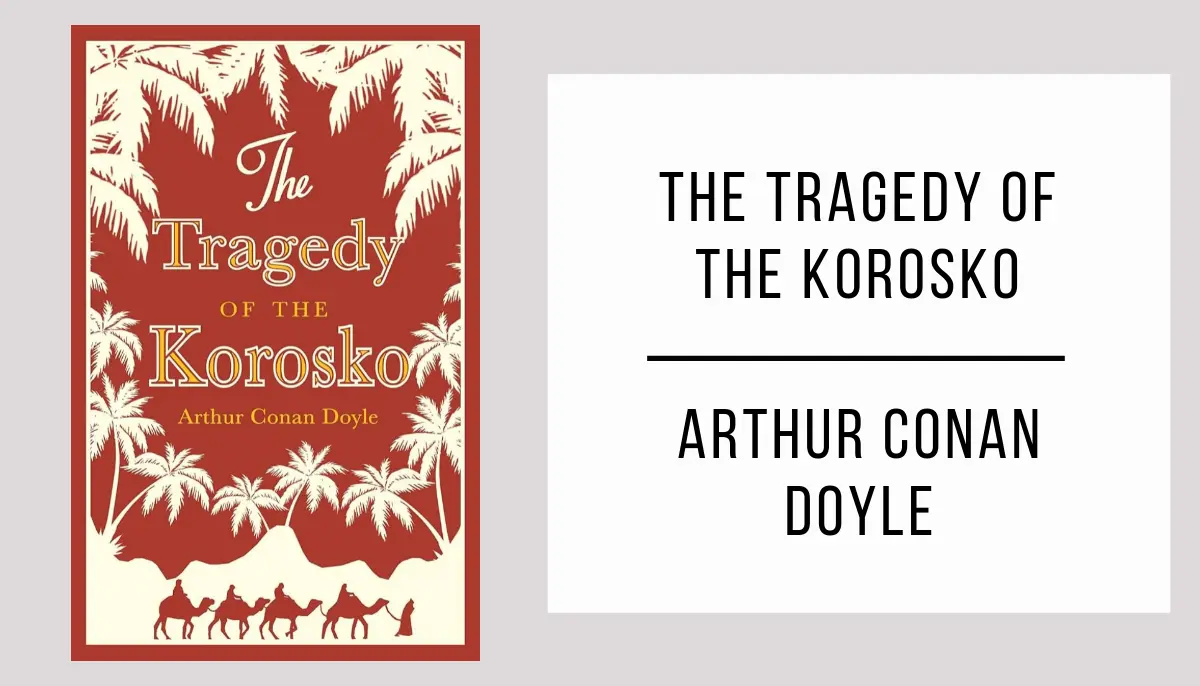
The Tragedy of Korosko is a captivating work by Arthur Conan Doyle that transports readers on a journey through ancient Egypt, where a group of European tourists faces unexpected danger that will challenge their survival.
This novel explores themes such as cultural clash, imperialism, and perceptions of Islam in 19th-century Europe, providing a unique look at the tensions and challenges of the time.
Immerse yourself in the pages of The Tragedy of Korosko and let yourself be enveloped by the intrigue, danger, and moral dilemmas the characters face. A captivating literary experience that will keep you hooked until the end.
54) The Great Shadow

The Great Shadow is an exciting adventure novel set in the Napoleonic era. Immerse yourself in a complex plot of love, rivalry, and mystery that will keep you hooked until the last page.
Through The Great Shadow, Arthur Conan Doyle explores themes such as honor, loyalty, and the clash between good and evil. Discover how the main characters find themselves in situations that test their bravery and determination.
Don’t miss the opportunity to enjoy this masterpiece of classic literature. The Great Shadow will transport you to a fascinating world full of intrigue, battles, and momentous decisions.
55) The Stark Munro Letters
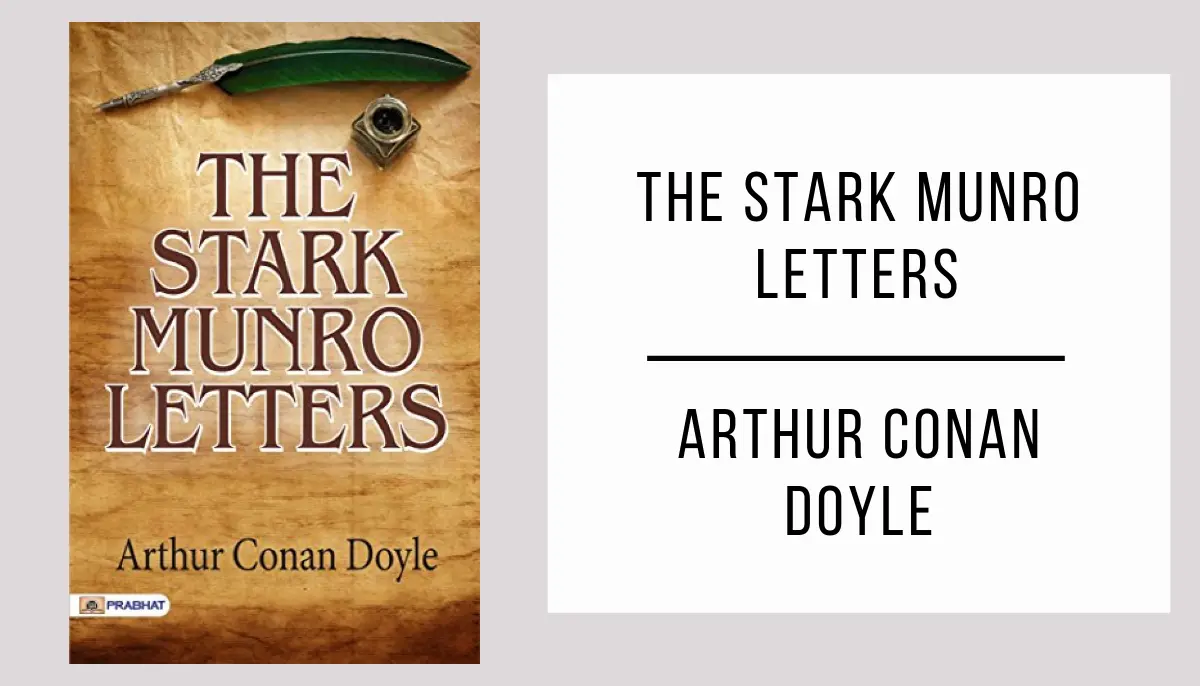
The Stark Munro Letters is a captivating epistolary novel that follows the journey of a young doctor in search of his purpose and professional success.
This work by Arthur Conan Doyle explores universal themes such as vocation, love, and the search for meaning in life, offering an intimate perspective on the personal and professional transformation of the protagonist.
Immerse yourself in the letters of Stark Munro and let yourself be carried away by a thrilling story that will inspire you to follow your dreams, question your own motivations, and discover the true essence of life.
56) The Refugees

The Refugees is a captivating historical novel by Arthur Conan Doyle that transports the reader to a time of court intrigues and forced migrations. Join its protagonists in a thrilling plot full of suspense and intense emotions.
This book explores universal themes such as power, religion, and the pursuit of freedom in a turbulent historical context. Through its characters, Arthur Conan Doyle immerses us in reflections on identity, sacrifice, and family ties.
Dive into the pages of The Refugees and let yourself be carried away by Arthur Conan Doyle’s narrative mastery. A story that will keep you glued to its pages, awakening your curiosity and emotions at every turn.






